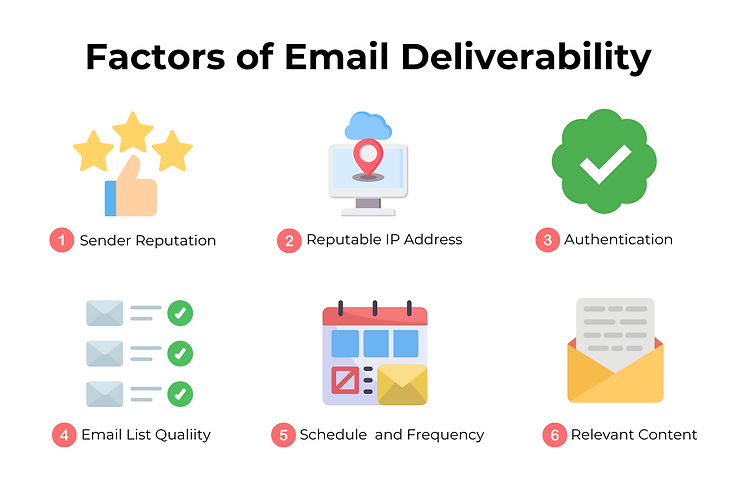Email deliverability is the cornerstone of effective email marketing campaigns. Ensuring your emails land in your audience’s inbox instead of the dreaded spam folder is key to driving engagement, conversions, and brand credibility. But what impacts email deliverability, and how can you optimize it? Let’s dive in.
What is Email Deliverability?
Email deliverability refers to the ability of your emails to successfully reach recipients’ inboxes without being blocked or flagged as spam. It’s a vital metric for email marketers and businesses sending bulk emails. Without good deliverability, your message remains unseen, diminishing the effectiveness of your communication efforts.

Factors Influencing Email Deliverability
Understanding and optimizing the following factors can significantly improve your email deliverability:

- Sender Reputation
This is a critical metric that reflects how email providers perceive your sending practices. A positive sender reputation improves inbox placement, while a poor reputation may lead to your emails being marked as spam. - SMTP Authentication Protocols
Properly implementing SMTP-related authentication protocols, such as:- SPF (Sender Policy Framework)
- DKIM (DomainKeys Identified Mail)
- DMARC (Domain-based Message Authentication, Reporting, and Conformance)
These protocols verify sender identity, reduce spoofing risks, and build trust with email providers.
- Dedicated vs. Shared IP Addresses
A dedicated IP address ensures your reputation is unaffected by others, while a shared IP may inherit issues from other senders. - Email List Quality
Maintaining a clean, engaged subscriber list minimizes hard bounces, spam complaints, and unsubscribes, all of which improve deliverability. - Email Content and Schedule
- Avoid spam trigger words.
- Provide valuable, engaging content.
- Optimize sending frequency to avoid overwhelming recipients.
Why is Email Deliverability Important?
- Boost Reach and Engagement
High deliverability ensures your message reaches subscribers, increasing open rates, click-throughs, and conversions. - Preserve Brand Reputation
Poor deliverability can harm your domain reputation, potentially leading to blacklisting by email providers. - Maximize ROI
Sending emails that reach the inbox efficiently utilizes your marketing budget, improving return on investment. - Ensure Legal Compliance
Adhering to regulations like GDPR and CAN-SPAM while maintaining deliverability protects against legal consequences.
Measuring and Monitoring Email Deliverability
Key metrics to track include:
- Delivery Rate: Aim for 95%-99%.
- Bounce Rate: Keep hard bounces below 1% and soft bounces under 2%-3%.
- Inbox Placement Rate: Focus on achieving a high placement in primary inboxes.
- Spam Complaint Rate: Keep this below 0.3%.
Leverage tools from your email service provider (ESP) to gain insights into these metrics and identify areas for improvement.

Best Practices to Enhance Email Deliverability
- Use SMTP authentication protocols like SPF, DKIM, and DMARC to establish trust with email servers.
- Regularly clean your subscriber list to remove inactive or invalid addresses.
- Monitor engagement rates and adjust your content and frequency accordingly.
- Test subject lines and email content for relevance and appeal.
- Ensure compliance with email marketing laws and regulations.

Improving email deliverability requires a strategic focus on sender reputation, SMTP authentication, and email list management. By implementing these best practices, you can maximize the impact of your email marketing efforts and achieve better engagement.